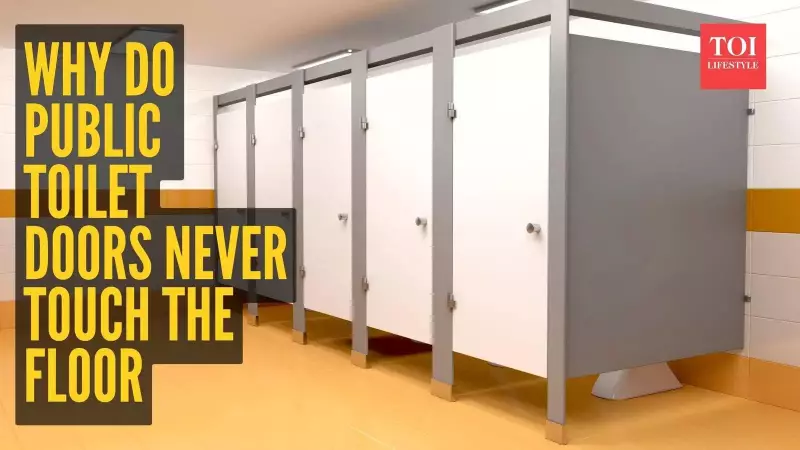
Have you ever walked into a public restroom at a shopping mall, airport, or office building and wondered why the toilet stall doors never reach the floor? This common design feature might seem like an oversight that compromises privacy, but it's actually a carefully considered solution to multiple challenges faced in high-traffic public facilities.
The Practical Genius Behind the Gap
That noticeable space between the bottom of restroom doors and the floor serves several crucial functions that make public facilities more efficient, safer, and easier to maintain. What appears to be a design flaw is actually a well-thought-out feature that addresses real-world problems in crowded spaces.
Enhanced Cleaning Efficiency
The gap significantly speeds up cleaning processes in facilities that serve hundreds of people daily. Maintenance staff can sweep and mop entire restroom floors without needing to open each individual stall door. This open space allows water and cleaning solutions to flow freely across the floor surface, ensuring thorough cleaning and preventing the accumulation of moisture that could lead to unpleasant odors.
In busy locations like airports and shopping malls where restrooms require multiple cleanings throughout the day, every minute saved contributes to more efficient facility management. The design enables quicker turnaround times between cleanings, ensuring better hygiene standards for all users.
Emergency Safety Features
That open space can be lifesaving during emergencies. If someone inside a stall experiences a medical issue, slips, or faints, the gap allows others to notice feet in unusual positions or detect movement that might indicate distress. This visibility enables quicker response times when every second counts.
The design also provides an escape route if door locks malfunction. People trapped inside due to faulty mechanisms can signal for help or even crawl out underneath if necessary. While emergencies in restrooms are relatively rare, this simple design element provides an important safety net.
Prevention of Misuse
Partial visibility discourages inappropriate activities that sometimes occur in public restrooms. The gap at the bottom creates enough visibility to deter behaviors like smoking, vandalism, or drug use while still maintaining reasonable privacy for legitimate users.
Fully enclosed stalls would provide complete concealment, making it difficult for security personnel to monitor activities. The strategic gap strikes a balance between user privacy and facility security, helping maintain a safer environment for everyone.
Cost-Effective Maintenance
Shorter doors are more economical and durable than full-length alternatives. They require less material to manufacture, reducing initial costs for facilities that need to install multiple stalls. The lighter weight also means less stress on hinges and hardware, resulting in fewer repairs over time.
These doors withstand constant exposure to cleaning chemicals and moisture better than full-length doors, which are more prone to water damage and warping. For organizations managing numerous public facilities, these cost savings add up significantly while ensuring longer-lasting installations.
Improved Air Circulation and Lighting
The gap enhances ventilation and natural light distribution throughout the restroom space. Better airflow helps dissipate odors more effectively, creating a more pleasant environment. The open space also allows light from the main area to filter into stalls, reducing the cramped feeling that completely enclosed spaces can create.
This improved air movement and lighting contributes to a more comfortable user experience while reducing the energy costs associated with artificial lighting and ventilation systems.
Function Over Form
This design prioritizes practical efficiency over complete privacy in spaces serving large numbers of people. While the gap might seem inconvenient to some users, its multiple benefits make public restrooms more functional, safer, and easier to maintain.
The next time you notice that space under a restroom door, remember it's not an oversight but a thoughtful solution to the complex challenges of managing high-traffic public facilities efficiently.





